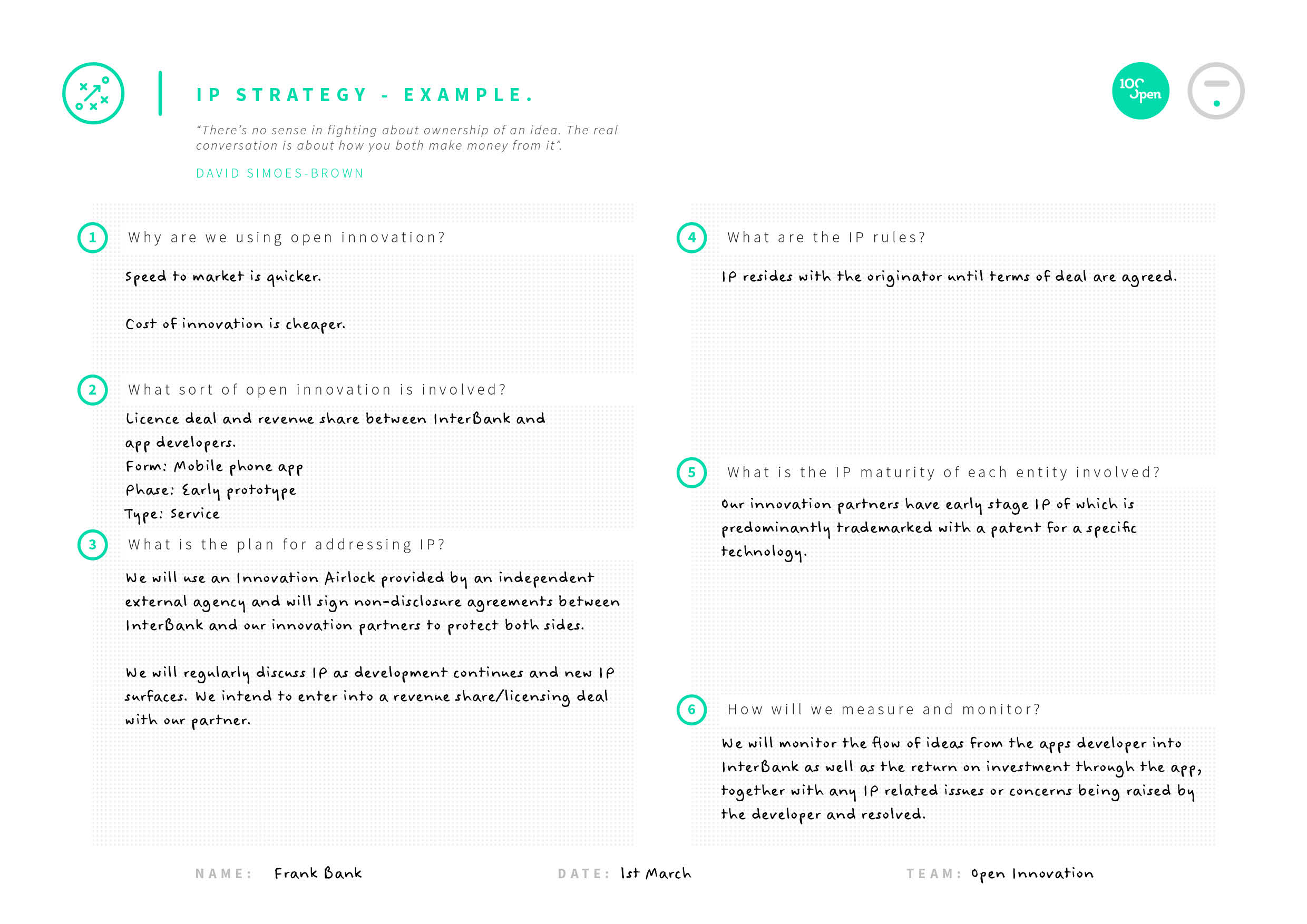This tool helps us discuss and agree the appropriate approach to intellectual property in open innovation relationships. We use this tool to order our thinking about intellectual property to aid initial discussions with an innovation partner. We also use the tool to brief an IP specialist to help act on this strategy.


"There’s no sense in fighting about ownership of an idea. The real conversation is about how you both make money from it".
David Simoes-Brown
We use this form to prepare our thinking about intellectual property. Ideally we use the tool with potential partners in order to explore different options together without having to jump straight to oft-fraught negotiation.
1. Why are we using open innovation?
Here we aim to understand and review why open innovation is the right choice – what are the drivers for both partners? Are any other entities involved? What is the relationship between all entities? Who is funding which part of the programme?
2. What sort of innovation is involved?
Here it’s important to be clear about the form, phase and type of innovation involved:
Form: What exactly does the innovation consist of? Why is it different to existing products or services?
Phase: How close to market is the innovation? How much is still to be invested before it launches?
Type: Is it a service, a product or a process? Is it a design, brand or behaviour?
3. What are the IP objectives?
Here we summarise the strategic IP objectives for each open Innovation Partner. At a minimum what do we each need to get out of IP? Then we plan what actions need to be progressed to make this a success for all entities involved.
4. What are the IP rules?
There should be a legal framework in place governing open innovation programmes and here we examine such issues as the definition of IP, foreground and background IP, ownership and usage of the IP in the future and what happens to new IP if it develops from the partnership.
5. What is the IP maturity or sophistication of each entity involved?
In this step we evaluate where each entity is on a spectrum of IP experience and expertise in order to gauge the need for expert help and advice. Does each have a clearly defined plan for IP as part of their business model? What does each entity hope to achieve from an IP perspective? Who is taking the lead on IP matters?
6. How will we measure and monitor?
Firstly we put in place a process for monitoring IP as the relationship progresses. We should check that all entities involved are following the IP terms and conditions defined in our framework. And given that it is innovation, we need to monitor any new value that is being created and how this is then being protected from an IP perspective.
Three examples of measurement:
– Our company is working with a number of universities on some joint research: We may wish to monitor the flow of inventions plus any publications coming out from that research project, and if and how those inventions are being analysed and decisions taken about patent applications being filed.
– Our company is working with an entrepreneur – we may wish to monitor the flow of ideas from the entrepreneur into the company as well as any IP related issues or concerns being raised by the individual and resolved.
– We are running a Government-funded program involving multiple parties big and small. We may wish to ensure that IP issues are recorded and discussed at project milestone reviews.
Source: Donal O’Connell
HOW THIS TOOL FITS IN WITH OTHERS
Refer to the Open Innovation Manifesto to inform the IP strategy and the rationale for open innovation.
The Give|Get and Open Innovation Models tools help to define the sort of open innovation involved.
The IP strategy will be developed and refined during the Innovation Airlock process, which is designed to protect the IP of both partners.
